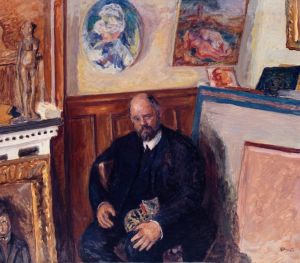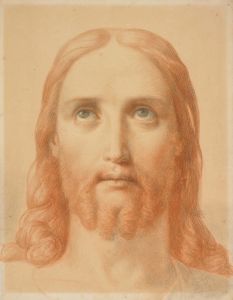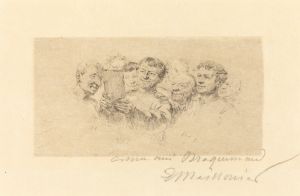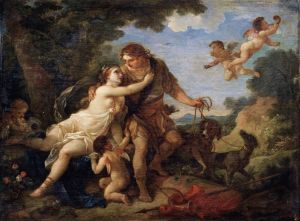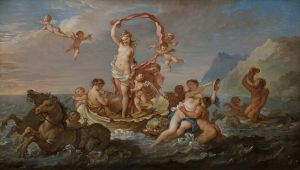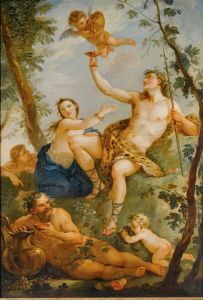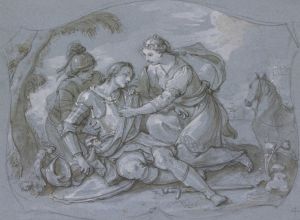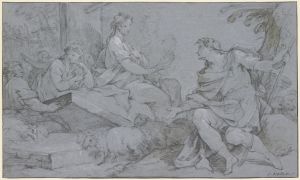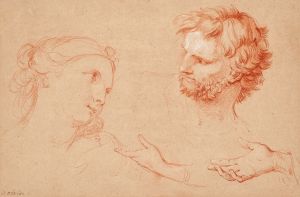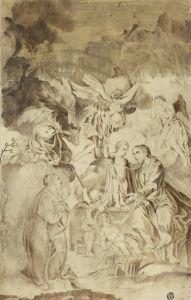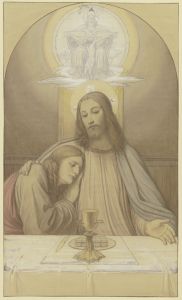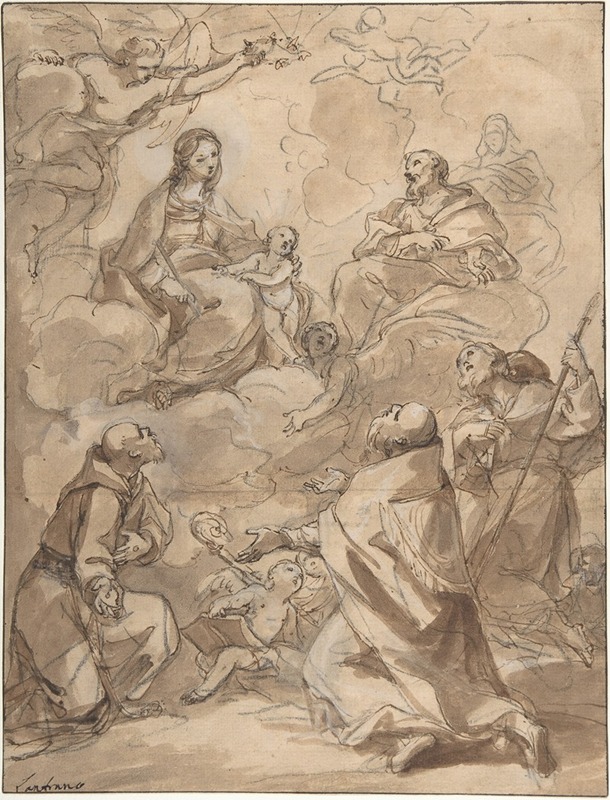
The Holy Family Appearing to St. Francis, St. Augustine, and St. Roch
A hand-painted replica of Charles-Joseph Natoire’s masterpiece The Holy Family Appearing to St. Francis, St. Augustine, and St. Roch, meticulously crafted by professional artists to capture the true essence of the original. Each piece is created with museum-quality canvas and rare mineral pigments, carefully painted by experienced artists with delicate brushstrokes and rich, layered colors to perfectly recreate the texture of the original artwork. Unlike machine-printed reproductions, this hand-painted version brings the painting to life, infused with the artist’s emotions and skill in every stroke. Whether for personal collection or home decoration, it instantly elevates the artistic atmosphere of any space.
Charles-Joseph Natoire's painting The Holy Family Appearing to St. Francis, St. Augustine, and St. Roch is a religious artwork created by the French Rococo artist, who was active during the 18th century. Natoire, born in 1700 in Nîmes, France, was a prominent painter of his time, known for his mastery in decorative art, religious compositions, and mythological scenes. He trained under prominent artists such as Louis Galloche and François Lemoyne and later became the director of the French Academy in Rome.
This particular painting depicts a vision of the Holy Family—comprising the Virgin Mary, the Christ Child, and Saint Joseph—appearing to three saints: St. Francis of Assisi, St. Augustine of Hippo, and St. Roch. Each of these saints holds significant roles in Christian tradition. St. Francis is recognized as the founder of the Franciscan Order and is often associated with humility and devotion to Christ. St. Augustine, a theologian and philosopher, is one of the most influential figures in Western Christianity. St. Roch, venerated as a protector against plagues, is frequently depicted in religious art as a pilgrim with a staff and a wound on his leg, often accompanied by a dog.
The painting exemplifies Natoire's skill in combining dynamic composition with delicate Rococo aesthetics. The figures are arranged in a harmonious and balanced manner, with the Holy Family positioned above the saints, emphasizing their divine nature. The use of light and color enhances the spiritual atmosphere, drawing the viewer's attention to the central figures. Natoire's ability to convey emotion and devotion through the gestures and expressions of the saints reflects his expertise in religious storytelling.
While the exact date of the painting's creation is not widely documented, it aligns with Natoire's broader body of work, which often included religious themes commissioned by churches or private patrons. Natoire's career was marked by his ability to adapt his style to suit both grand public commissions and more intimate devotional pieces.
The painting is an example of the Rococo style's approach to religious art, blending ornate detail and a sense of grace with the spiritual subject matter. It reflects the 18th-century French artistic tradition, which sought to inspire devotion while also appealing to the aesthetic tastes of the period.
Further details about the painting's current location or provenance are not readily available in public records.





